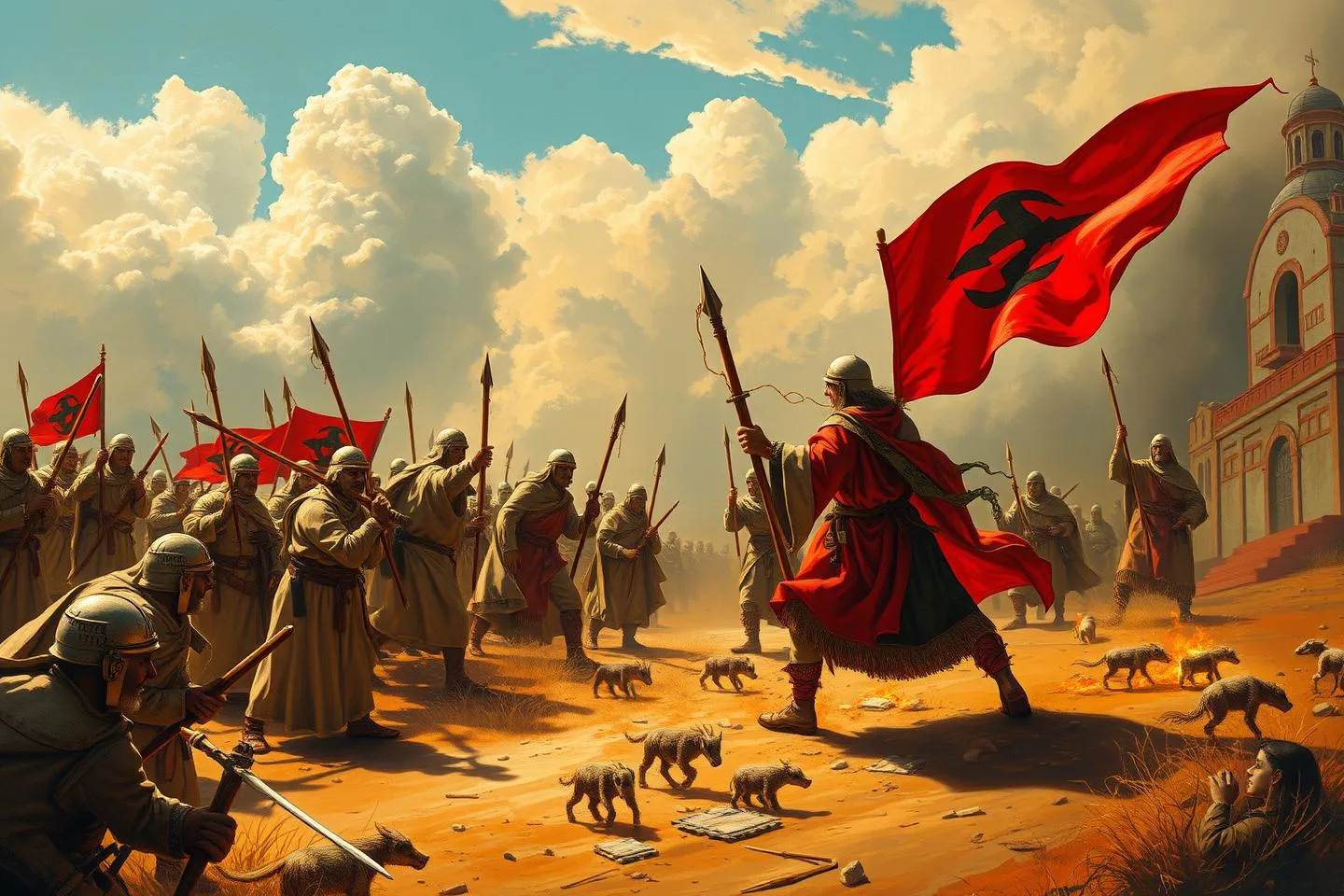Being war spiritual meaning is a profound concept that touches on the complex relationship between conflict and spiritual growth. Throughout history, wars have shaped societies, beliefs, and individual lives. Understanding this relationship can help us find deeper meanings in our experiences, especially during tumultuous times.
Understanding the Essence of Conflict in Spirituality
War has been a part of human history for centuries. Spiritual texts and traditions often portray war not merely as a physical struggle but as a significant spiritual event. Many ancient scriptures depict battles as metaphors for the inner conflicts we face. For example, in some traditions, the wars of gods represent the struggles of humanity against its lower nature.
Conflict can be a catalyst for personal and collective transformation. When people face challenges, they often reevaluate their lives and priorities. This can lead to profound changes in beliefs, behaviors, and relationships. In this way, war isn’t just destructive; it can also serve as a source of renewal.
However, the spiritual meaning of being at war also includes recognizing the dual nature of conflict. On one hand, war brings about chaos, suffering, and loss. On the other hand, it can lead to resilience, unity, and a greater understanding of life’s purpose. This duality is essential in comprehending the spiritual implications of conflict.

The Spiritual Journey Through Turmoil
Different belief systems interpret the experience of conflict in unique ways. For example, in Buddhism, suffering is an inevitable part of life. The teachings encourage individuals to embrace their struggles as opportunities for growth. Similarly, in Christianity, trials and tribulations are often seen as tests of faith that can lead to spiritual enlightenment.
Personal struggles and external conflicts shape spiritual growth significantly. Many people find that their darkest moments reveal their inner strength and wisdom. During times of war, individuals can undergo profound transformations. They may discover new perspectives on compassion, forgiveness, and love.
Many personal stories highlight this journey. For instance, a soldier returning from war may initially feel lost and traumatized. However, through meditation and reflection, they might discover a new passion for helping others or advocating for peace. These testimonials remind us that even in the face of destruction, there can be a pathway to spiritual awakening.
The Archetypes of War in Spiritual Traditions
In spiritual traditions, several archetypes emerge during times of conflict. Understanding these archetypes can provide insight into our experiences during war. The key archetypes include:
-
The Warrior: This archetype represents bravery, determination, and the fight for a cause. The warrior embodies the spirit of resilience and the will to protect what is valued.
-
The Peacemaker: In contrast to the warrior, the peacemaker seeks harmony and resolution. This archetype emphasizes compassion and understanding, often working to heal the wounds caused by conflict.
-
The Victim: This represents those affected by conflict, highlighting the pain and suffering that can arise. Recognizing this archetype encourages empathy and the importance of supporting those in need.
These archetypes encompass different aspects of the human experience during times of conflict. They illustrate the balance between aggression and peace in spiritual understanding. The warrior must learn when to fight and when to seek peace, while the peacemaker must understand the necessity of standing up against injustice at times.
Symbols of Conflict and Their Spiritual Interpretations
Symbols play a powerful role in conveying the spiritual meaning of being at war. They encapsulate complex ideas in simple forms. Here are some significant symbols and their interpretations:
| Symbol | Meaning |
|---|---|
| Sword | Represents protection, truth, and the cutting away of illusions. |
| Dove | Symbolizes peace, hope, and divine intervention amidst chaos. |
| Yin-Yang | Illustrates the balance between opposing forces, including war and peace. |
| The Phoenix | Signifies rebirth and renewal through destruction and transformation. |
| Shield | Represents defense, the call to protect values, and the inner strength needed in warfare. |
Each symbol carries deep spiritual meanings that can help individuals navigate their experiences during conflict. For instance, the sword can remind us of the importance of truth in the midst of lies, while the dove encourages us to seek peace and hope.
Meditative Practices for Finding Peace Amidst Chaos
In times of conflict, finding inner peace can feel challenging. However, specific meditative practices can help individuals process their feelings and reconnect with their inner selves. Here are some effective techniques:
-
Mindfulness Meditation: This practice encourages individuals to stay present and observe their thoughts and feelings without judgment. It can be helpful for processing emotions related to conflict.
-
Breathwork: Focusing on the breath can help calm the mind and reduce anxiety. Taking deep, intentional breaths can create a sense of grounding and stability.
-
Guided Imagery: Visualizing peaceful scenes or positive outcomes can foster a sense of hope and tranquility. This technique can be particularly helpful for individuals dealing with traumatic experiences.
In addition to meditation, prayer and affirmations can also foster a sense of peace. Simple affirmations, such as “I am at peace” or “I let go of fear,” can help shift one’s mindset. Engaging with nature, whether through walks in the park or simply observing the beauty around us, can also promote mindfulness and inner calm.
The Path Forward: Integrating War Experiences into Spiritual Awareness
Understanding the spiritual meanings behind conflict can lead to profound healing. Many individuals find that reflecting on their experiences, whether they are veterans, refugees, or witnesses to conflict, allows them to grow spiritually. This understanding can pave the way for forgiveness and letting go, which are essential components of spiritual practice.
Forgiveness does not mean condoning wrong actions but rather freeing oneself from the burdens of resentment and anger. Letting go allows individuals to move forward, embracing new possibilities and healing.
Encouraging readers to find their unique spiritual pathways is crucial. Each person’s journey through conflict is different, and the lessons learned can be integrated into daily life. This might mean advocating for peace, helping others heal, or simply being more mindful and compassionate in everyday interactions.
Conclusion
In conclusion, the being war spiritual meaning is a profound topic that invites us to explore the intersection of conflict and spirituality. By understanding the historical context of war, the spiritual journey through turmoil, and the various archetypes and symbols associated with conflict, we can gain valuable insights into our experiences. Through meditation and the integration of these lessons into our lives, we can find peace amid chaos and continue our spiritual growth.
As we look toward the future, embracing the lessons learned from conflict can lead to a deeper understanding of ourselves and the world around us. In doing so, we honor the struggles of the past while fostering hope and healing for the future.
